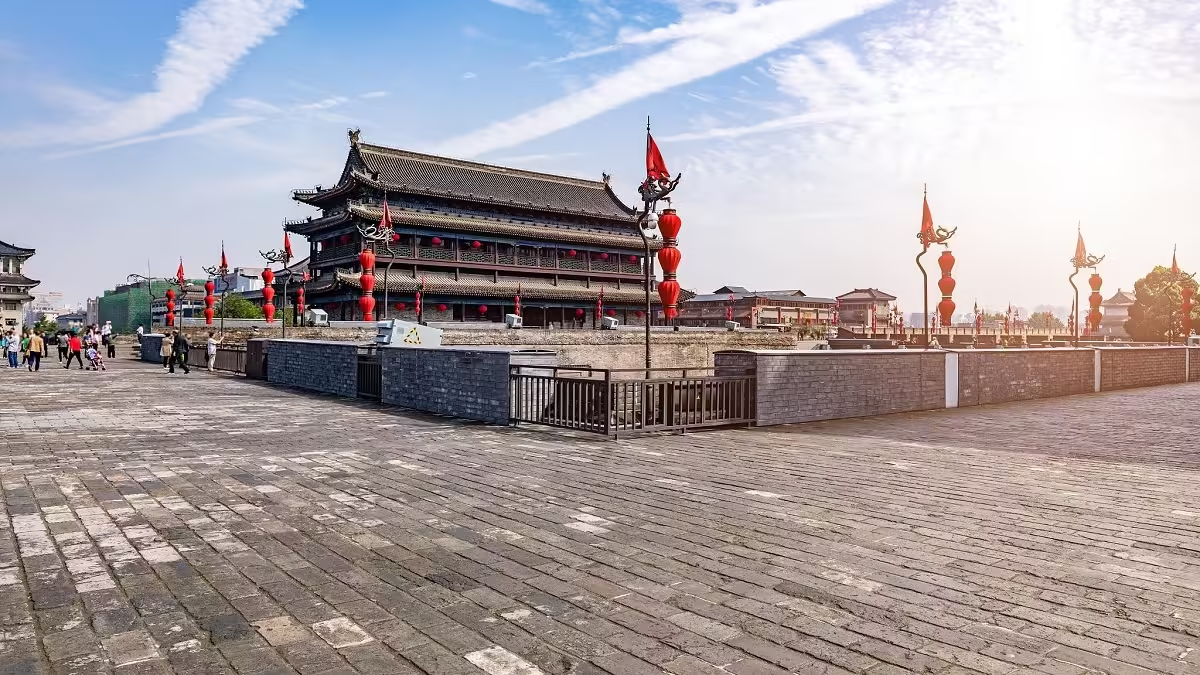Xi’an, one of the oldest cities in China, holds a rich tapestry of history that spans thousands of years. From its early beginnings as a home to prehistoric communities to its rise as the capital of some of China’s most powerful dynasties, Xi’an has played a central role in the cultural, political, and economic development of the nation. This historical city has witnessed the evolution of Chinese civilization and continues to be a living museum that offers insight into China’s glorious past.
Ancient Times
Xi’an’s history can be traced back to the Paleolithic era when the “Lantian Man,” a primitive human species, inhabited the region. This area became one of the cradles of early human civilization. During the Neolithic period, the Banpo people, ancestors of the Han Chinese, established settlements in the area. The Banpo village, located on the outskirts of modern-day Xi’an, was a significant prehistoric site. These early inhabitants were primarily engaged in agriculture, cultivating crops, and raising livestock. They also practiced hunting and gathering, laying the foundation for the region’s agricultural tradition. The Banpo people were known for their advanced pottery techniques and well-organized social structure, making Xi’an one of the earliest centers of human activity in China.
The Qin Dynasty Period
The Qin Dynasty (221-206 BCE) marked a pivotal moment in Xi’an’s history. In 221 BCE, Qin Shi Huang, the first emperor of a unified China, declared himself emperor and established his capital in Xianyang, near modern-day Xi’an. Under his rule, the city became the political and cultural heart of the empire. Qin Shi Huang initiated the construction of the grand Epang Palace and the world-renowned Terracotta Army, a vast collection of life-sized sculptures buried near his mausoleum. These clay soldiers, meant to protect the emperor in the afterlife, remain one of the most significant archaeological discoveries of the 20th century. The Qin Dynasty’s legacy is deeply embedded in Xi’an’s identity, as it laid the groundwork for the city’s importance in Chinese history.
The Western Han Period
In 202 BCE, Liu Bang, the founder of the Han Dynasty, declared himself emperor in Xi’an, then known as Chang’an. During the Western Han period (202 BCE – 9 CE), Chang’an was established as the capital and became the political, economic, and cultural center of China. The city flourished under Han rule, with its population growing rapidly and its influence extending far beyond China’s borders. Chang’an was a key hub in the Silk Road, facilitating trade and cultural exchanges between China and the rest of the world. The city’s prosperity during this time cemented its status as one of the greatest cities in ancient China.
The Sui and Tang Periods
The Sui (581-618) and Tang (618-907) dynasties were golden ages for Xi’an, known again as Chang’an. After the Tang dynasty established Chang’an as its capital, the city underwent significant expansion and reconstruction. Emperor Taizong, in the eighth year of the Zhenguan reign (634 CE), ordered the construction of the Daming Palace on the northern outskirts of the city, which later became the political center of the Tang Empire. The city’s layout and architecture during this period reflected the height of feudal society, with grand structures like city walls, towers, and the Xingqing Palace contributing to its grandeur. Chang’an became one of the largest and most cosmopolitan cities in the world, influencing urban planning and culture throughout East Asia.
The Yuan and Ming Periods
During the Yuan Dynasty (1271-1368), the city, then known as Anxi, was governed by Kublai Khan’s third son, Mangu. However, it was not until the Ming Dynasty (1368-1644) that the city gained the name “Xi’an.” In 1380, during the reign of Emperor Hongwu, the city’s iconic Drum Tower was constructed, followed by the Bell Tower in 1384. These structures became symbols of the city and have stood as reminders of its historical significance ever since. The Ming period also saw the establishment of Xi’an’s modern layout, which continues to define the city today.
Modern and Contemporary Periods
Xi’an’s role in modern Chinese history is also notable. In 1921, Feng Yuxiang, a prominent warlord, stationed his troops in the former Qin royal city, setting the stage for future military developments. The city was also central to the 1936 Xi’an Incident, where generals Zhang Xueliang and Yang Hucheng detained Chiang Kai-shek to force him to cooperate with the Chinese Communist Party against Japanese aggression, a pivotal event in the lead-up to the Second Sino-Japanese War. In 1974, the discovery of the Terracotta Army further solidified Xi’an’s status as a world-class tourist destination, drawing millions of visitors from around the globe and connecting the ancient city with the modern world.

